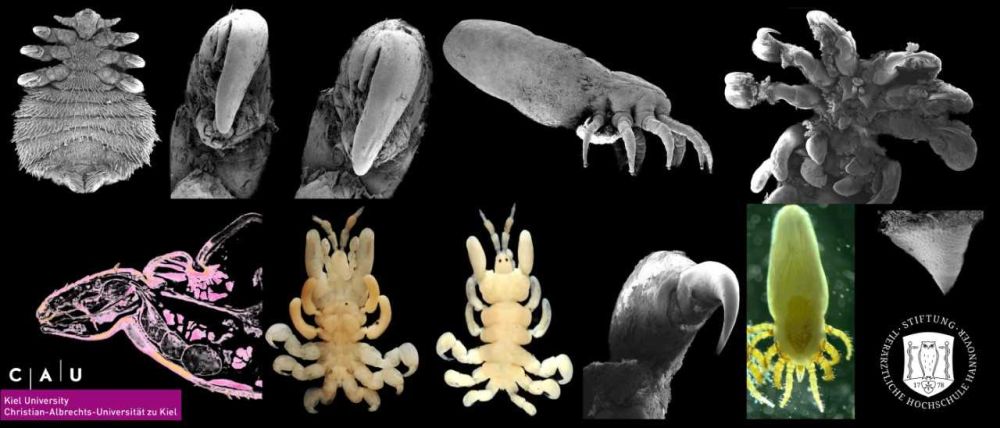
| Project data | |
|---|---|
| Project leader: | Dr. Kristina Lehnert |
| Scientific staff: | Insa Herzog |
| Project term: | February 2022 until March 2025 |
| Sponsorship: | DFG-Deutsche Forschungsgemeinschaft |
| Project partner: | Prof. Dr. Stanislav Gorb and Anika Preuss, Institute for Zoology, Functional Morphology, Kiel University (CAU) |
Project description
Marine mammals are infected by a variety of endo- and ectoparasites which face multiple challenges when having to attach to their host. Arthropod parasites of marine mammals have developed specialized anatomical adaptations, to secure their hold on aquatic hosts, and sophisticated strategies, to enable transmission between vagile pelagic and amphibious wildlife. We have chosen three arthropod species that have adapted differently to their marine hosts: seal lice, as hematophagous insects of terrestrial origin and whale lice, as amphipod crustaceans of marine origin, as well as respiratory mites from the airways of seals. All three species have motile larvae that are transmitted during bodily contact of host individuals. Their exoskeleton has evolved by adapting materials and design to survive on gregarious and diving marine mammals. Little is known about biology of marine mammal arthropod parasites, but even less about physical aspects of their life in this challenging environment. Novel approaches are required to provide more insight in structural design and mechanical properties and knowledge on physical principles of their attachment and locomotion. State of the art instrumentation, such as micro-CT, confocal laser scanning microscopy and Cryo-SEM will provide basic knowledge on morphological adaptations of parasites that enable their attachment to hosts during dives, haul-out and how they endure currents and social interactions. The locomotive abilities of the different life cycle stages on various surfaces and developed features of insect, crustacean and arachnid species are compared to understand functional morphology of their locomotory system. Parasites reduce the fitness of their host most obviously at the interface between parasite and host. Whale lice impede healing processes of skin wounds and seal lice are vectors for filarial and viral diseases. We will investigate the host-parasite interface using histopathology of infected tissues to define the structural damage to host tissues. Friction and adhesion forces maintained by the different parasite species are investigated by custom made microforce testing devices. The envisaged project will provide knowledge on relationships between structure, material properties and attachment performance of attachment devices in selected arthropod parasite species. Data on their locomotion and recruitment dynamics will be studied for the first time and the results will provide new avenues for development of biologically-inspired surfaces and systems specialized for enhancement or reduction of frictional or adhesive forces. New data on the properties of attachment devices in different ontogenetic stages and their role in the life cycle can potentially reveal interesting veterinary aspects.
Description teaser images
Overview of all investigated parasites within this study: seal lice (Echinophthirius horridus; Anoplura; Insecta), whale lice (Isocyamus deltobranchium; Cyamidae; Amphipoda), and the naso-pharyngeal mite (Halarachne halichoeri; Arachnida; Acari). Images provided by Dr. Kristina Lehnert and Prof. Dr. Stanislav N. Gorb.
Contact person
Stiftung Tierärztliche Hochschule Hannover
Institute for Terrestrial and Aquatic Wildlife Research
Werftstr. 6
25761 Büsum
Dr. Kristina Lehnert
Phone: +49 (0)511-8568158
e-mail


